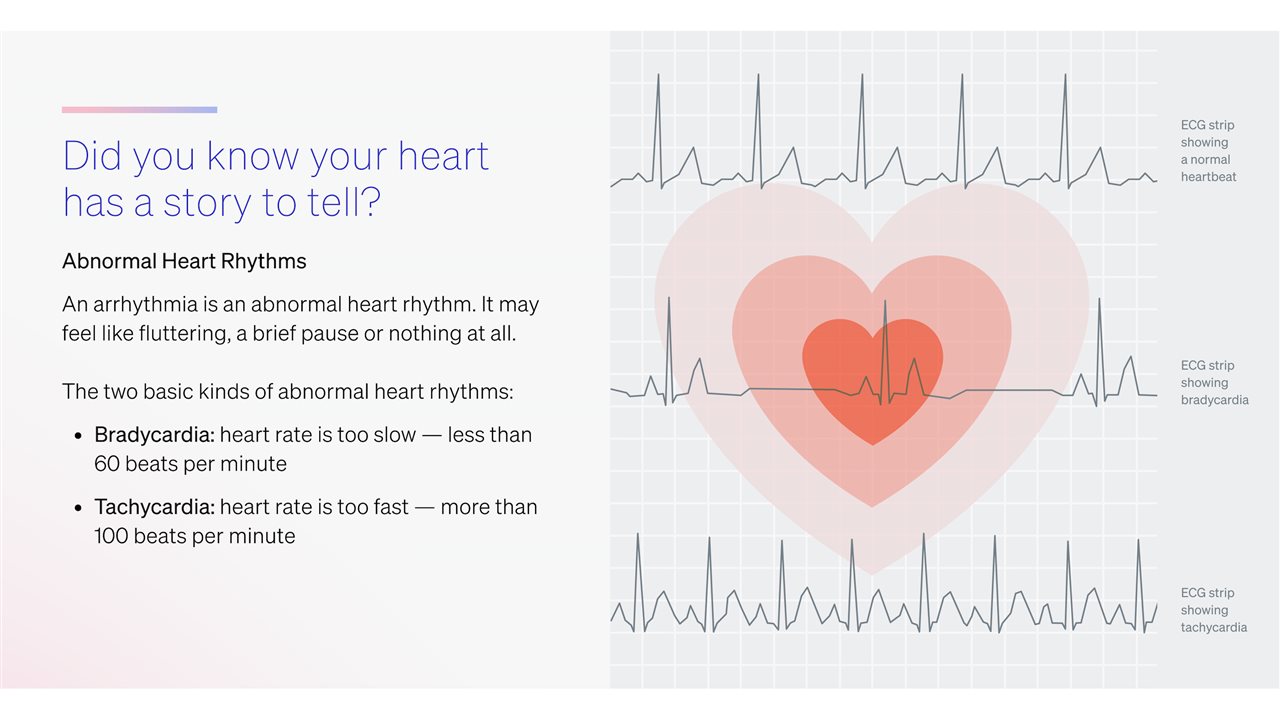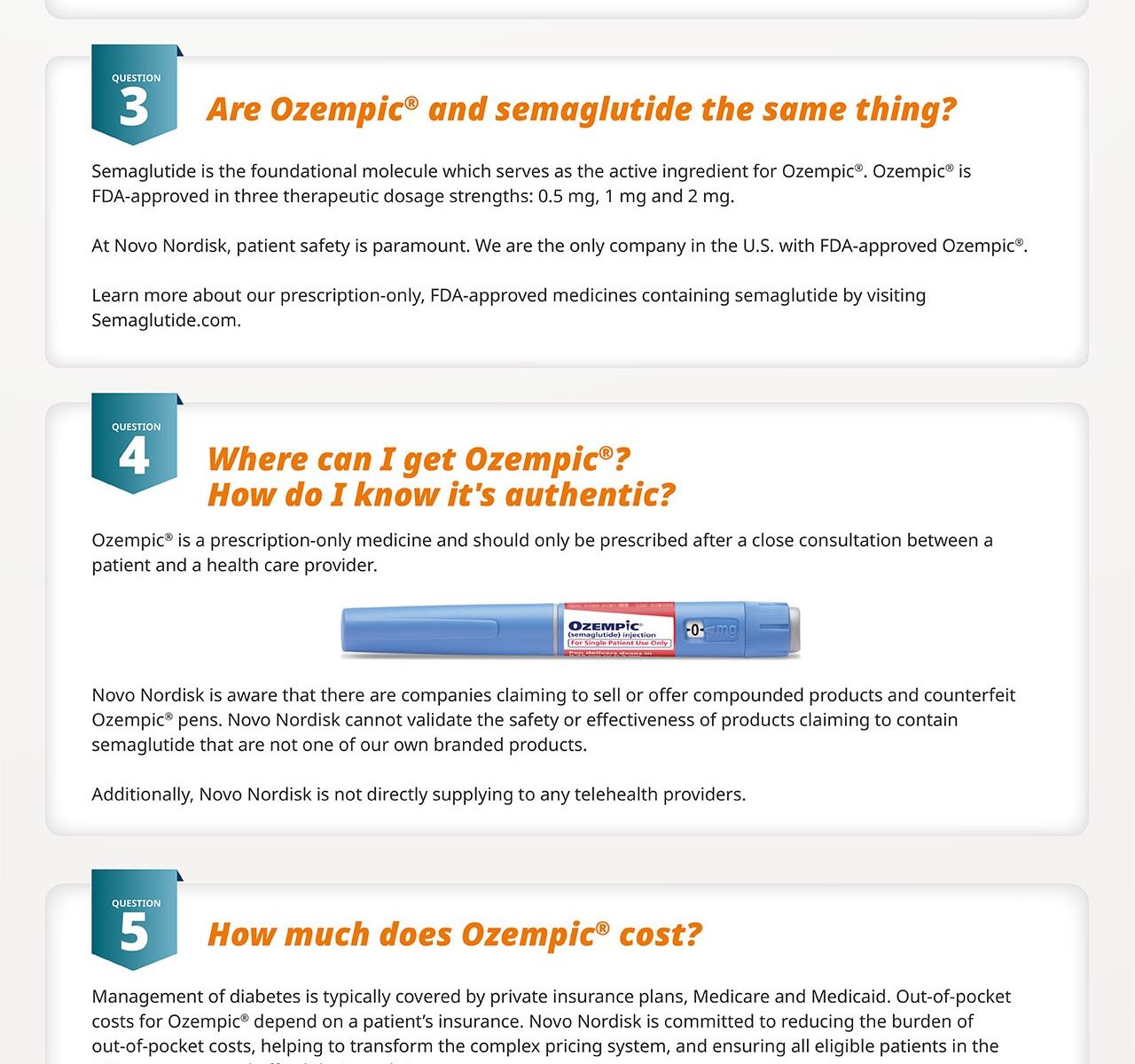2024-02-12T23:01:00
(BPT) – Talking about and acknowledging mental health challenges have evolved, with more acceptance and mainstream conversation in recent years from both patients and their loved ones, as well as healthcare providers (HCPs). Yet with schizophrenia, many patients are not aware of all the different treatment and dosing options that are now available.1 Whether due to low awareness, stigma and outdated stereotypes, or social or geographical issues that make accessing treatment options difficult, there are countless barriers that exist for many adult patients living with schizophrenia.1-4 However, by equipping HCPs with information on the latest treatments and less-frequent dosing options, they can help their patients make more-informed treatment decisions when they are aware of available treatment options.
Understanding Behaviors and Fighting Stigma
Millions of adults in the United States live with schizophrenia, a complex and chronic brain disorder that can impact all aspects of day-to-day life. People with schizophrenia often experience distortions in thinking, perceptions, emotions, language, and behavior that interrupt everything from personal relationships to managing a career.2,5 Without consistent treatment, schizophrenia symptoms can often create challenges for patients that impact even simple tasks in their lives.2,3 There can be many factors for why someone wouldn’t take medicine, from stigma to forgetting, which can happen to anyone, but adults living with schizophrenia are often nonadherent due to the nature of the condition or a lack of social support.2,6,7
Daily oral schizophrenia medications are the most prescribed treatment despite the adherence challenges that might result from patients forgetting to take their medication as prescribed.6-8 Within emergency room and hospital settings, many HCPs must rely on injectable antipsychotics that act quickly to minimize psychosis symptoms with patients in crises and in cases where there is no health history or known diagnosis.9 Understandably, the administration of an injection in a crisis setting can be associated with negative experiences for patients, which can result in a sense of fear and distrust in injectable treatments.10 Yet for day-to-day symptom management in adults diagnosed with schizophrenia, there are other options, known as long-acting injectables (LAIs).
A Different Kind of Injection for Symptom Management
LAIs are not the same injections that patients receive in emergency situations. Instead, LAIs offer less-frequent dosing options that can help patients stay on track with their medication management over time. Additionally, among other benefits, LAIs are professionally administered by a trained HCP, which can help patients avoid medication nonadherence because their HCP will be aware if they miss an injection appointment and can help them get back on track with their treatment.
A recent survey also showed there is a gap between what some patients desire as a treatment option and what HCPs typically prescribe. In the survey, 90% (44 of 49) of adult schizophrenia patients currently on an LAI agree that after knowing what living with schizophrenia is like, they wish they would have started an LAI treatment sooner after diagnosis.4 Additionally, 90% (172 of 192) of adult schizophrenia patients want their HCPs to recommend an LAI if they feel it is the right treatment option, even if the patient is stable on a current treatment.4 Because LAIs are administered by healthcare professionals, treatment teams have greater insight into when a patient has missed a dose and can therefore provide additional support to get that patient back on therapy.
Patrick’s Story of Hope and His Treatment Plan
Take it from patients like Patrick, who initially struggled with finding the right treatment to help address the symptoms he experienced with schizophrenia and challenges he faced with his oral medication. After Patrick’s loved ones helped connect him to a care team that embraced a different treatment approach with LAIs, Patrick was able to experience symptom relief. With his symptoms under control, Patrick was able to regain his sense of stability and independence by managing his condition with fewer schizophrenia medication doses per year.
Johnson & Johnson schizophrenia LAIs (J&J LAIs) are among the latest treatment options for adults living with schizophrenia. They offer a consistent and effective approach to symptom management, with dosing options of 1, 3, or 6 months, the longest dosing interval available.
INVEGA HAFYERA® (paliperidone palmitate 6-month) was approved for the treatment of adults with schizophrenia based on a pivotal, phase 3, randomized, double-blind, global study in which it demonstrated noninferiority to INVEGA TRINZA® (paliperidone palmitate 3-month) in delaying time to relapse.11
A total of 702 stabilized patients were randomized in a 2:1 ratio to receive INVEGA HAFYERA® (paliperidone palmitate 6-month) (n=478) or INVEGA TRINZA® (paliperidone palmitate 3-month) (n=224) over the 12-month, double-blind study.11 178 patients who were relapse-free on INVEGA HAFYERA® (n=121) or INVEGA TRINZA® (n=57) in the double-blind phase chose to continue treatment with INVEGA HAFYERA® in the 2-year, Real-world, Open-label Extension Safety and Tolerability Study.12 This open-label study of INVEGA HAFYERA® found that approximately 96% (171 of 178) of adult patients who chose to enter the study remained relapse-free on INVEGA HAFYERA® and nearly 9 out of 10 (154 of 178) adult patients completed 2 years of treatment with INVEGA HAFYERA®.12 In the pivotal study, the most common side effects of INVEGA HAFYERA® included injection site reactions, weight gain, headache, upper respiratory tract infections, feeling restlessness or difficulty sitting still, slow movements, tremors, stiffness and shuffling walk.13 In the open-label extension study, the most common adverse reactions were headache, blood prolactin increased, hyperprolactinemia, diarrhea, weight increased, and nasopharyngitis.12
For patients like Patrick, who is currently treated with INVEGA HAFYERA®, the ability to receive a long-term treatment that is professionally administered rather than a daily dose of schizophrenia medication frees up time so that he doesn’t have to remember to take it every day. This gives him the freedom to spend more time on the activities he enjoys while his schizophrenia symptoms are controlled.
Advocating for LAIs with Your Treatment Team
“I have seen the benefits of LAIs firsthand while helping Patrick and other adult patients living with schizophrenia,” says Dr. Gus Alva, board-certified psychiatrist and Patrick’s doctor. “As a healthcare provider, I always aim to create holistic treatment plans that factor in the important social, emotional, and physical aspects of a patient’s life. LAIs have been a key tool for me in creating a path forward for patients following diagnosis.”
With his symptoms under control, Patrick has been able to focus on the things that matter most to him, like his education and hobbies. “After some time on my first LAI—and finding music as a means for meditation—alongside support from my psychiatrist, family, and friends, I started to regain a sense of independence and noticed I was spending less time thinking about my next dose,” Patrick says. “I felt that my physical and mental health was improving. And day-by-day, I had a greater sense of stability, which I hadn’t experienced for a while.”
For adult patients who are recently diagnosed with schizophrenia or who have tried various treatments, consider speaking with a psychiatric nurse practitioner or other HCP about J&J LAIs and the pathway to fewer doses per year with INVEGA HAFYERA®. Before starting INVEGA HAFYERA®, patients must first be adequately treated with INVEGA SUSTENNA® (paliperidone palmitate 1-month) for at least 4 months or for one 3-month injection cycle with INVEGA TRINZA®, at an appropriate dose.13 With the support of family and treatment teams, living a full life with schizophrenia is possible. For more information about J&J LAIs, please visit JanssenLAIs.com.
INDICATIONS
INVEGA HAFYERA™ (6-month paliperidone palmitate) is a prescription medicine given by injection every 6 months by a healthcare professional and used to treat schizophrenia. INVEGA HAFYERA™ is used in adults who have been treated with either:
- INVEGA SUSTENNA® (paliperidone palmitate) a 1-time-each-month paliperidone palmitate extended-release injectable suspension for at least 4 months
- INVEGA TRINZA® (paliperidone palmitate) a 1-time-every-3-months paliperidone palmitate extended-release injectable suspension for at least 3 months
INVEGA TRINZA® is a prescription medicine given by injection every 3 months by a healthcare professional and used to treat schizophrenia. INVEGA TRINZA® is used in people who have been adequately treated with INVEGA SUSTENNA® for at least 4 months.
INVEGA SUSTENNA® is a prescription medicine given by injection by a healthcare professional.
INVEGA SUSTENNA® is used to treat schizophrenia in adults.
IMPORTANT SAFETY INFORMATION
What is the most important information I should know about INVEGA HAFYERA™, INVEGA TRINZA® and INVEGA SUSTENNA®?
INVEGA HAFYERA™, INVEGA TRINZA® and INVEGA SUSTENNA® may cause serious side effects, including:
- Increased risk of death in elderly people with dementia-related psychosis.
INVEGA HAFYERA™, INVEGA TRINZA® and INVEGA SUSTENNA® increase the risk of death in elderly people who have lost touch with reality (psychosis) due to confusion and memory loss (dementia). INVEGA HAFYERA™, INVEGA TRINZA® and INVEGA SUSTENNA® are not for the treatment of people with dementia-related psychosis.
Do not receive INVEGA HAFYERA™, INVEGA TRINZA® or INVEGA SUSTENNA® if you are allergic to paliperidone, paliperidone palmitate, risperidone, or any of the ingredients in INVEGA HAFYERA™, INVEGA TRINZA® or INVEGA SUSTENNA®. See the end of the Patient Information leaflet in the full Prescribing Information for a complete list of INVEGA HAFYERA™, INVEGA TRINZA® and INVEGA SUSTENNA® ingredients.
Before you receive INVEGA HAFYERA™, INVEGA TRINZA® or INVEGA SUSTENNA®, tell your healthcare professional about all your medical conditions, including if you:
- have had Neuroleptic Malignant Syndrome (NMS)
- have or have had heart problems, including a heart attack, heart failure, abnormal heart rhythm, or long QT syndrome
- have or have had low levels of potassium or magnesium in your blood
- have or have had uncontrolled movements of your tongue, face, mouth, or jaw (tardive dyskinesia)
- have or have had kidney or liver problems
- have diabetes or have a family history of diabetes
- have Parkinson’s disease or a type of dementia called Lewy Body Dementia
- have had a low white blood cell count
- have had problems with dizziness or fainting or are being treated for high blood pressure
- have or have had seizures or epilepsy
- have any other medical conditions
- are pregnant or plan to become pregnant. It is not known if INVEGA HAFYERA™, INVEGA TRINZA® or INVEGA SUSTENNA® will harm your unborn baby
- If you become pregnant while taking INVEGA HAFYERA™, INVEGA TRINZA® or INVEGA SUSTENNA®, talk to your healthcare professional about registering with the National Pregnancy Registry for Atypical Antipsychotics. You can register by calling 1-866-961-2388 or visit http://womensmentalhealth.org/clinical-and-research-programs/pregnancyregistry.
- Infants born to women who are treated with INVEGA HAFYERA™, INVEGA TRINZA® or INVEGA SUSTENNA® may experience symptoms such as tremors, irritability, excessive sleepiness, eye twitching, muscle spasms, decreased appetite, difficulty breathing, or abnormal movement of arms and legs. Let your healthcare professional know if these symptoms occur.
- are breastfeeding or plan to breastfeed. INVEGA HAFYERA™, INVEGA TRINZA® or INVEGA SUSTENNA® can pass into your breast milk. Talk to your healthcare professional about the best way to feed your baby if you receive INVEGA HAFYERA™, INVEGA TRINZA® or
INVEGA SUSTENNA®.
Tell your healthcare professional about all the medicines you take, including prescription and over-the-counter medicines, vitamins, and herbal supplements. INVEGA HAFYERA™, INVEGA TRINZA® and INVEGA SUSTENNA® may affect the way other medicines work, and other medicines may affect how INVEGA HAFYERA™, INVEGA TRINZA® and INVEGA SUSTENNA® works.
Your healthcare provider can tell you if it is safe to receive INVEGA HAFYERA™, INVEGA TRINZA® or INVEGA SUSTENNA® with your other medicines. Do not start or stop any medicines during treatment with INVEGA HAFYERA™, INVEGA TRINZA® or INVEGA SUSTENNA® without talking to your healthcare provider first. Know the medicines you take. Keep a list of them to show to your healthcare professional or pharmacist when you get a new medicine.
Patients (particularly the elderly) taking antipsychotics with certain health conditions or those on long-term therapy should be evaluated by their healthcare professional for the potential risk of falls.
How will I receive INVEGA HAFYERA™, INVEGA TRINZA® or INVEGA SUSTENNA®?
- Follow your treatment schedule exactly as your healthcare provider tells you to.
- Your healthcare provider will tell you how much you will receive and when you will receive it.
What should I avoid while receiving INVEGA HAFYERA™, INVEGA TRINZA® or INVEGA SUSTENNA®?
- INVEGA HAFYERA™, INVEGA TRINZA® and INVEGA SUSTENNA® may affect your ability to make decisions, think clearly, or react quickly. Do not drive, operate heavy machinery, or do other dangerous activities until you know how INVEGA HAFYERA™, INVEGA TRINZA® or
INVEGA SUSTENNA® affects you.
- Avoid getting overheated or dehydrated.
INVEGA HAFYERA™, INVEGA TRINZA® and INVEGA SUSTENNA® may cause serious side effects, including:
- See “What is the most important information I should know about INVEGA HAFYERA™, INVEGA TRINZA® and
INVEGA SUSTENNA®?”
- stroke in elderly people (cerebrovascular problems) that can lead to death
- Neuroleptic Malignant Syndrome (NMS). NMS is a rare but very serious problem that can happen in people who receive
INVEGA HAFYERA™, INVEGA TRINZA® or INVEGA SUSTENNA®. NMS can cause death and must be treated in a hospital. Call your healthcare professional right away if you become severely ill and have any of these symptoms: high fever; severe muscle stiffness; confusion; loss of consciousness; changes in your breathing, heartbeat, and blood pressure.
- problems with your heartbeat. These heart problems can cause death. Call your healthcare professional right away if you have any of these symptoms: passing out or feeling like you will pass out, dizziness, or feeling as if your heart is pounding or missing beats.
- uncontrolled movements of your tongue, face, mouth, or jaw (tardive dyskinesia)
- metabolic changes. Metabolic changes may include high blood sugar (hyperglycemia), diabetes mellitus and changes in the fat levels in your blood (dyslipidemia), and weight gain.
- low blood pressure and fainting
- changes in your blood cell counts
- high level of prolactin in your blood (hyperprolactinemia). INVEGA HAFYERA™,
INVEGA TRINZA® or INVEGA SUSTENNA® may cause a rise in the blood levels of a hormone called prolactin (hyperprolactinemia) that may cause side effects including missed menstrual periods, leakage of milk from the breasts, development of breasts in men, or problems with erection.
- problems thinking clearly and moving your body
- seizures
- difficulty swallowing that can cause food or liquid to get into your lungs
- prolonged or painful erection lasting more than 4 hours. Call your healthcare professional or go to your nearest emergency room right away if you have an erection that lasts more than 4 hours.
- problems with control of your body temperature, especially when you exercise a lot or spend time doing things that make you warm. It is important for you to drink water to avoid dehydration.
The most common side effects of INVEGA HAFYERA™ include: injection site reactions, weight gain, headache, upper respiratory tract infections, feeling restlessness or difficulty sitting still, slow movements, tremors, stiffness and shuffling walk.
The most common side effects of INVEGA TRINZA® include: injection site reactions, weight gain, headache, upper respiratory tract infections, feeling restlessness or difficulty sitting still, slow movements, tremors, stiffness and shuffling walk.
The most common side effects of INVEGA SUSTENNA® include: injection site reactions; sleepiness or drowsiness; dizziness; feeling of inner restlessness or needing to be constantly moving; abnormal muscle movements, including tremor (shaking), shuffling, uncontrolled involuntary movements, and abnormal movements of your eyes.
Tell your healthcare professional if you have any side effect that bothers you or does not go away. These are not all the possible side effects of INVEGA HAFYERA™, INVEGA TRINZA® or INVEGA SUSTENNA®. For more information, ask your healthcare professional or pharmacist.
Call your healthcare professional for medical advice about side effects. You may report side effects of prescription drugs to the FDA at 1-800-FDA-1088.
General information about the safe and effective use of INVEGA HAFYERA™, INVEGA TRINZA® or INVEGA SUSTENNA®
Medicines are sometimes prescribed for purposes other than those listed in a Patient Information leaflet. Do not use INVEGA HAFYERA™,
INVEGA TRINZA® or INVEGA SUSTENNA® for a condition for which it was not prescribed. You can ask your pharmacist or healthcare professional for information about INVEGA HAFYERA™, INVEGA TRINZA® or INVEGA SUSTENNA® that is written for healthcare professionals.
For more information, go to www.invegahafyera.com, www.invegatrinza.com or www.invegasustenna.com or call 1-800-526-7736.
Please click to read the full Prescribing Information, including Boxed WARNING, for
INVEGA HAFYERA™, INVEGA TRINZA® and INVEGA SUSTENNA® and discuss any questions you have with your healthcare professional.
References
- Cahling L, Berntsson A, Bröms G, Öhrmalm L, BJPsych Bull. 2017 Oct; 41(5): 254–259. doi:10.1192/pb.bp.116.055483
- Goldstone LW. Am J Manag Care. 2020;26(3):S48-S54. doi:10.37765/ajmc.2020.43011
- Parellada E, Bioque M. CNS Drugs. 2016;30(8):689-701. doi:10.1007/s40263-016-0350-7
- Data on file. Janssen Pharmaceuticals, Inc.
- Correll CU, Schooler NR. Neuropsychiatr Dis Treat. 2020;16:519-534. doi:10.2147/NDT.S225643
- Ostuzzi G, Bertolini F, Tedeschi F, et al. World Psychiatry. 2022;21(2):295-307. doi:10.1002/wps.20972
- Acosta FJ, Hernández JL, Pereira J, Herrera J, Rodríguez CJ. World Journal of Psychiatry. 2012;2(5):74-82. doi:10.5498/wjp.v2.i5.74
- Data on file. Janssen Pharmaceuticals, Inc.
- Furiato AJ, Ruffalo ML. Psychiatr Times. 2021;38(11):42-43.
- Bosanac P, Castle DJ. BJPsych Advances. 2015;21(2):98-105. doi:10.1192/apt.bp.114.013565
- Najarian D, Sanga P, Wang S, et al. Int J of Neuropsychopharmacol. 2022;25(3):238-251. doi:10.1093/ijnp/pyab071
- Najarian D, Turkoz I, Knight R, et al. Int J of Neuropsychopharmacol. 2023;26(8):537-544. doi:10.1093/ijnp/pyad028
- INVEGA HAFYERA® [Prescribing Information]. Titusville, NJ: Janssen Pharmaceuticals, Inc.
© Janssen Pharmaceuticals, Inc. 2024 01/24 cp-426188v1

















